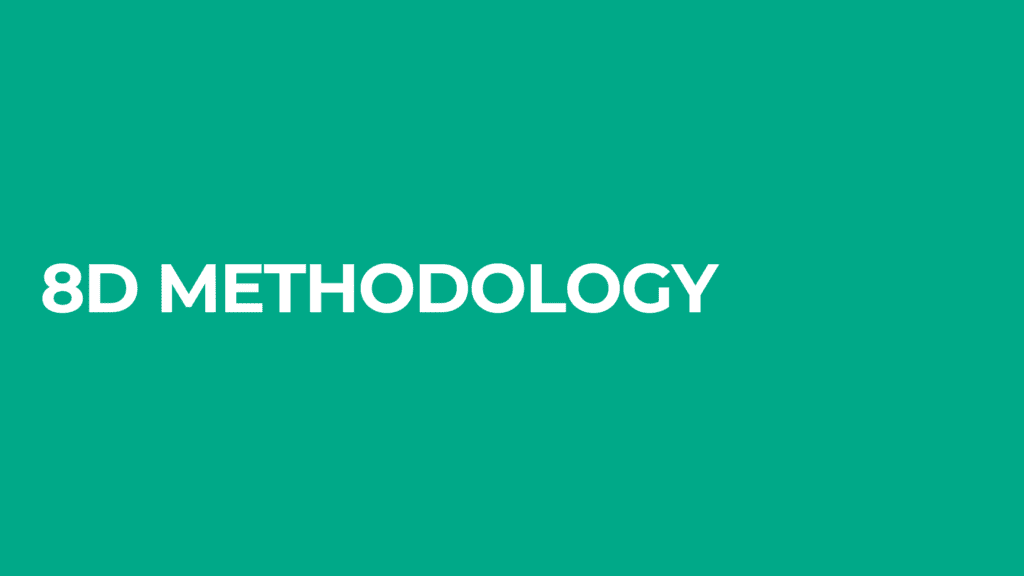What’s 8D Methodology?
The 8D methodology is a problem-solving approach used by many companies to identify, correct, and prevent problems. The "8D" stands for the 8 steps or disciplines involved in the process.
It is a team-based approach that involves collaboration and data-driven analysis to find root causes and develop solutions. The 8D methodology is commonly used in industries such as automotive, aerospace, and healthcare, but it can be applied to any business or organization facing complex problems.
The 3 most important pieces of information about the 8D methodology are:
- The 8D methodology is a structured problem-solving approach that involves 8 steps or disciplines.
- The 8D methodology is team-based and involves collaboration and data-driven analysis to find root causes and develop solutions.
- The 8D methodology is commonly used in industries such as automotive, aerospace, and healthcare, but it can be applied to any business or organization facing complex problems.
The eight steps of the 8D problem-solving process are:
D1: Establish the team - In this first step, a cross-functional team is assembled to address the problem. The team should include individuals with different areas of expertise and perspectives. This helps to ensure that all potential causes of the problem are considered and that the team can develop a comprehensive solution.
D2: Describe the problem - The team should then clearly define and describe the problem in detail. This includes identifying the symptoms, when and where the problem occurred, and how it was detected. It is important to gather as much information as possible to ensure that the team fully understands the problem and its impact.
D3: Containment actions - In this step, the team develops and implements temporary containment actions to prevent the problem from getting worse while they investigate and develop a permanent solution. These actions may include stopping production, segregating defective parts, or implementing a short-term workaround.
D4: Root cause analysis - The team then conducts a thorough analysis to identify the root cause(s) of the problem using tools such as fishbone diagrams, 5 whys, or Pareto charts. It is important to focus on the underlying causes of the problem rather than just treating the symptoms.
D5: Corrective actions - Based on the root cause analysis, the team develops and implements permanent corrective actions to address the problem and prevent it from recurring. These actions may include process changes, design modifications, or additional training.
D6: Verify effectiveness - In this step, the team verifies that the corrective actions are effective and that the problem has been resolved. This may involve additional testing or data analysis to ensure that the solution is working as intended.
D7: Prevent recurrence - The team then develops and implements preventive actions to ensure that the problem does not recur in the future. This may involve process improvements, additional training, or changes to design or specifications.
D8: Congratulate the team - Finally, the team is recognized and congratulated for their efforts in solving the problem. This helps to build morale and encourages the team to continue to focus on continuous improvement.
==>> Follow us on Quora <<==
The 3 most important pieces of information about the eight steps of the 8D problem-solving process are:
1.The eight steps involve establishing a team, describing the problem, implementing containment actions, conducting root cause analysis, developing corrective and preventive actions, verifying effectiveness, and recognizing the team's efforts. T
2. The process is iterative, meaning that the team may need to revisit and refine previous steps as they work towards a solution. T
3.The 8D problem-solving process is designed to be a collaborative, data-driven approTach that emphasizes problem prevention and continuous improvement. It is widely used in industries such as automotive, aerospace, and healthcare, but can be applied to any organization or business facing complex problems.


